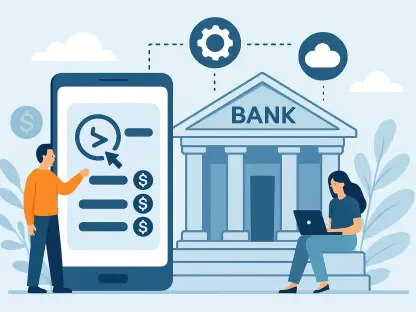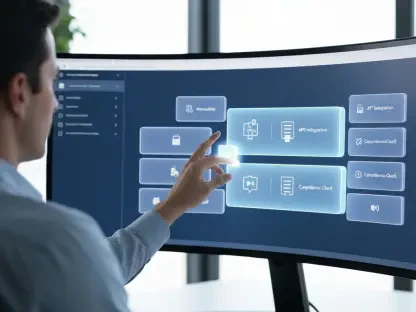The Transformation Roadmap introduced by HM Revenue and Customs (HMRC) marks a decisive shift towards a digital tax system, aspiring to significantly enhance customer experience and streamline the tax filing process. HMRC aims to drastically reduce paper-based interactions, seeking to facilitate smoother transactions for Self Assessment customers as they approach the imminent payment deadlines for their second Payment on Account. By 2030, the goal is for 90 percent of all HMRC customer interactions to be digital, a move supported by the introduction of over 50 IT projects. This ambition aligns with the broader governmental objectives of technology-driven service reforms and economic growth. Ensuring accessibility, efficiency, and environmental consciousness in tax operations, these new services reflect an encouraging stride towards a more responsive and user-friendly tax system tailored to the modern taxpayer’s needs.
Revolutionizing Tax Compliance through Digitization
The unfolding Transformation Roadmap places digital integration as a cornerstone for overhauling HMRC’s tax services, targeting efficiencies in both infrastructure and customer service. The Self Assessment framework is receiving vital upgrades aimed at simplifying the administrative burden faced by taxpayers. A significant part of this transformation involves streamlining the Self Assessment registration and opt-out processes. Enhanced on-screen messages have been implemented to ease customer anxiety and reduce inquiries, indicating a move towards a seamless and pointed communication strategy. This approach not only lowers the interaction costs borne by taxpayers but also aligns with HMRC’s objective of minimizing operational inefficiencies.
As the agency continues this digital evolution, taxpayers are increasingly encouraged to adopt digital practices like early filing of tax returns. Such measures facilitate quicker resolutions and expedite possible tax refunds, demonstrating a shift towards faster service delivery and customer-centric service design. The pathway towards digitization also includes improved tools for managing tax affairs, promoting reduced time and effort in tax management. This shift in services underscores the intention to integrate modern technology into tax administration. With this transition, customers are offered more autonomy over their tax obligations, highlighting HMRC’s commitment to improving usability and adaptability in line with contemporary technological trends.
Enhancing Customer Interaction and Compliance
Facilitating better user interactions, HMRC has introduced numerous enhancements to bolster the taxpayer’s journey within the Self Assessment process. Among the most notable improvements is the advanced online appeals process for penalties related to late filing and payment. These enhancements signal a move towards a user-centered service design, offering more transparency and ease of use for taxpayers navigating various tax requirements. By aiming to reduce the administrative overhead associated with penalty appeals, HMRC’s new process highlights an enhanced focus on establishing a supportive and efficient framework for compliance.
Furthermore, promoting flexibility in financial planning, HMRC has progressively introduced Budget Payment Plans. These plans enable taxpayers to spread their tax costs over time, thereby reducing the risk of errors and encouraging timely compliance. By spreading payments, customers can manage their finances more effectively, reducing stress around tax obligations. The efforts to improve compliance alongside increased flexibility reinforce HMRC’s commitment to fostering a cooperative relationship with taxpayers. This broader strategy emphasizes simplifying complexity in tax processes, ultimately paving the way for smoother engagement and lower error incidence in national tax compliance.
Safeguarding Taxpayer Information and Communication
Recognizing the imperative for secure communication in an increasingly digital environment, HMRC has made concerted efforts to enhance cybersecurity measures and safeguard taxpayer information. The agency strives to educate Self Assessment customers about the risks of phishing attacks and scams. By encouraging heightened vigilance, especially concerning misleading emails and texts claiming to originate from HMRC, the department underscores its commitment to cybersecurity. This effort underlines the central role of security in a digitally-forward tax system, building taxpayer trust and reinforcing data integrity in transactions with HMRC.
Moreover, ensuring the integrity and accuracy of tax data, HMRC has emphasized the importance of regular information updates. Through consolidating access to information, HMRC encourages taxpayers to stay informed of their obligations utilizing online resources, such as the new checker tool on GOV.UK. This tool provides clarity on who needs to file a tax return, assisting not only new participants in the Self Assessment framework but also those needing to re-register. Such pragmatic updates to engagement structures exhibit HMRC’s impetus on fostering an informed and accountable taxpayer environment, where precision and clarity in communication are paramount.
Embracing a Digital-First Tax System
The strategic enhancements spearheaded by HMRC align synergistically with overarching governmental initiatives for economic growth and service modernization. Amidst this transformation, transparency and reliability within tax administration remain focal points within the digitization agenda. This comprehensive move towards embracing a digitized tax system not only reflects a modernization of HMRC’s operations but also aligns with national objectives to empower citizens with efficient and responsive governmental operations. This evolution signifies a leap towards a future where digital conveniences are seamlessly woven into taxpayers’ day-to-day interactions with HMRC.
These technological advancements signify a modernization era for HMRC, moving beyond traditional methodologies and offering a glimpse into the future landscape of tax compliance in the UK. By simplifying processes and significantly reducing the operational burden on taxpayers, HMRC stands as a model for adapting to shifts in technology, ensuring its services meet and exceed the expectations of a digitally-capable populace. The increased incorporation of digital tools and resources fosters an environment conducive to proactive engagement and streamlined operations, setting a definitive benchmark for ongoing advancements in the public sector.
Summing Up the Transformative Strategies
The Transformation Roadmap is focusing on digital integration as a key element to upgrade HMRC’s tax services, aiming for enhanced efficiency in infrastructure and customer service. Significant updates to the Self Assessment framework are underway to alleviate administrative challenges for taxpayers, including streamlining registration and opt-out processes. Improved on-screen messages have been introduced to reduce customer anxiety and inquiries, marking a shift toward more seamless and effective communication, in line with HMRC’s goal to decrease operational inefficiencies and taxpayer interaction costs.
Moreover, taxpayers are being urged to embrace digital choices such as early tax return filing. These steps ensure quicker resolutions and hasten potential refunds, signifying a movement towards swifter service and a customer-focused design. Digitization also brings advanced tools for tax management, cutting down time and effort required. This transformation indicates HMRC’s pledge to integrating modern technology in tax services, granting customers greater control over their tax matters, emphasizing usability and adaptability in tune with technological advancements.









